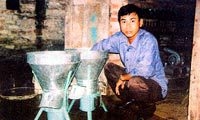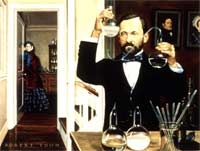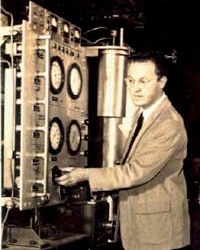The Braille alphabet for the visually impaired, self-sanitizing protective gear for healthcare workers… are some of the humanitarian inventions crafted by the creative minds of children around the world.
Top 7 Famous Inventions by Children
1. Braille
Louis Braille (1809 – 1852) was born in the town of Coupvray, about 30km east of Paris, France. At the age of 3, he contracted an eye infection that led to his blindness. From then on, Braille attended schools for visually impaired and disabled children.
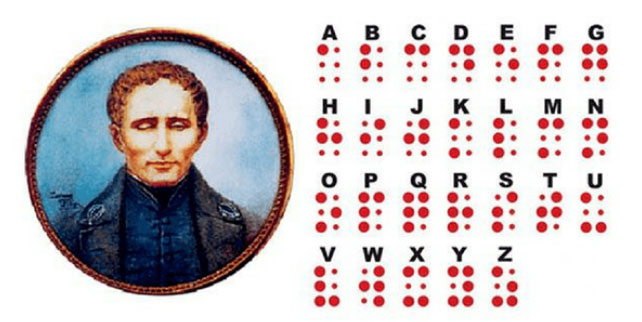
Louis Braille invented the Braille system.
In class, he was always diligent and eager to learn. Braille loved reading but could only access about 14 books designed for visually impaired children. At that time, visually impaired children could read embossed print through pages pressed on copper wires, carved wood, or cut letters sewn onto thick fabric, but they did not know how to write. By the age of 12, Braille dreamed of replacing embossed print with a language specifically for the visually impaired.
He experimented and perfected the Braille alphabet in 1824, when he was just 15 years old. Braille’s idea was inspired by a 12-dot writing system created by Captain Charles Barbier, which allowed soldiers to communicate secretly in the military.
The letters in the Braille system are organized in rectangular cells, consisting of raised dots that can be felt by touch. Each cell has 6 dots, with three dots on the left labeled as dots 1, 2, and 3 from top to bottom.
Meanwhile, the three dots on the right are labeled as dots 4, 5, and 6 from top to bottom. The arrangement of these dots corresponds to different letters. For instance, a cell with only dot 1 represents the letter ‘a.’
The Braille alphabet has become one of the “bridges” connecting knowledge for the visually impaired. Braille was introduced to Vietnam and localized in 1898.
2. Popsicle
Living in California, Frank Epperson (1894 – 1983) was just 11 years old when he invented the popsicle in 1905. Today, popsicles have become an essential summer treat.
One winter evening, Frank had the idea to dissolve soda powder in water and accidentally left the mixture overnight with the stirring stick still in the cup. The next morning, the mixture had frozen, giving birth to the popsicle.
Using the stirring stick as a handle, Frank slowly lifted the mixture out of the cup and took a lick. The cool, unusual taste of the new treat delighted Frank, and he began selling it around his neighborhood.
However, the popsicle only gained real fame in 1923 when Frank decided to scale up production. During the summer, Frank sold this treat at the Neptune beach amusement park. The locals were excited to enjoy this unique, novel treat.
On a roll, in 1924, Frank applied for a patent for the popsicle, described as “an attractive frozen confection that can be easily enjoyed without getting dirty from bare hand contact and does not require a plate, spoon, or any other eating utensils.”
Frank named his invention Epsicle, a combination of his name and the word “icicle.” Initially, the sticks were made from wood and were attractively decorated. Later, influenced by pop culture, Frank renamed the invention Popsicle. Today, this treat is commonly referred to as popsicles.
3. Snowmobile
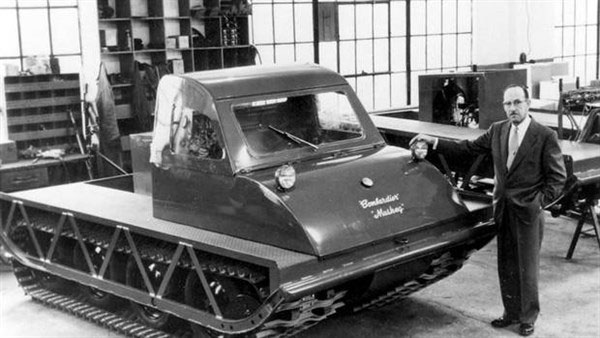
The first snowmobile.
Joseph-Armand Bombardier (1907 – 1964) was born in Quebec City, Canada. From a young age, he exhibited prodigious talent as he frequently tinkered with inventions.
At the age of 10, Joseph-Armand combined a cigar box with a broken alarm clock to create a functioning model of a tractor. Growing up in a rural area blanketed in snow during winter, Joseph-Armand always dreamed of creating a device that would help people glide easily over the snow.
He began designing and building snowmobiles at the age of 15. The vehicle combined a Ford Model T engine with a wooden airplane propeller attached to the back. However, due to the bulky engine, the first vehicle made loud noises when he and his brother tested it. Their father ordered them to stop.
Undeterred, Joseph-Armand sought ways to improve and upgrade his vehicle while making a living as a mechanic. His invention efforts were intensified in the 1930s when his son died from appendicitis, but due to a snowstorm, the family could not get him to the hospital in time.
Eventually, he succeeded in improving the snowmobile to be fast, smooth, quiet, and capable of long-distance travel. This product revolutionized travel over snow and marshlands.
4. Bra
In the early 20th century, women’s bras were designed uncomfortably and negatively impacted the health of the wearer. Mary Phelps Jacob, then a teenager living in New York, was determined to design a more comfortable, less cumbersome garment for women.
With the help of a maid, Mary sewed two silk handkerchiefs together. The straps were made of pink ribbons. As a result, the American girl created a soft, lightweight bra that fit the shape and needs of women compared to traditional bras. Mary gifted them to friends and family, who wholeheartedly supported her.
Recognizing the enormous potential of her design, Mary patented her new bra style, naming it “Backless Brassiere.” Later, Mary opened a store selling bras for women called “Caresse Crosby.”
The bras designed by Mary became widely used but only gained real popularity during World War I when the U.S. government urged women to stop buying wired bras to conserve metal. Customers immediately switched to using the sleek, compact bras designed by Mary.
However, at that time, Mary sold the patent to Warner Brothers Corset, a fashion company that continued to develop and release fashionable, innovative bra styles for the next 30 years. Although she never received awards for her invention, Mary expressed pride that her design positively changed the lives of millions of women.
5. Cancer Diagnosis Method
Born in 1997, Jack Andraka made a name for himself in the medical field when he discovered a method for detecting pancreatic cancer at the age of 15. The death of a close relative from pancreatic cancer motivated the young man to explore early cancer detection methods.
When embarking on his idea, Jack was like a blank sheet of paper, not understanding what pancreatic cancer was. He had to read through complex and confusing information about over 8,000 types of proteins discovered in pancreatic cancer.
All of this information was gathered by Jack through his own research on the Internet. After 4,000 experimental trials, Jack discovered a protein called mesothelin, a biomarker in pancreatic cancer. This was an extraordinary achievement for a high school student without a medical degree.
After discovering mesothelin, Jack sent 200 letters to cancer researchers at Johns Hopkins University, suggesting that they take his research into clinical trials. However, the young man was rejected 199 times. After many efforts and failures, Jack finally registered a patent for his pancreatic cancer diagnostic method in 2012.
Sixty years prior, the medical world had still not found a way to detect pancreatic cancer. Jack’s method could even detect other types of cancer, HIV, and tuberculosis at a low cost, making it accessible for patients in difficult circumstances with low incomes.
In addition to his medical research, Jack has participated with various educational organizations and student groups to provide advice, development direction, and support for young inventors.
6. Lead Detection Device
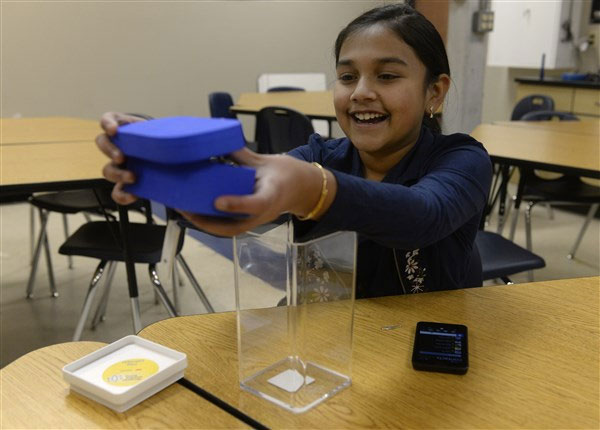
Gitanjali Rao and the lead detection device.
In 2020, 15-year-old Gitanjali Rao was honored by Time magazine as “Teen of the Year” for her numerous technological inventions across various fields, including a device that detects lead in drinking water and an application that uses artificial intelligence to identify cyberbullying.
From a young age, Gitanjali was passionate about inventing. She has over 8 inventions related to technology.
Back in 2016, many residents of Flint, Michigan, were poisoned due to high levels of lead in their water. Gitanjali’s parents had to buy test strips to check the water. However, these strips often provided inaccurate results.
Through scientific literature, Gitanjali discovered that exposure to lead could cause skin rashes, headaches, vomiting, and even lead to strokes and death. She sought ways to remove lead from water, but this project was too challenging for a 12-year-old. Therefore, Gitanjali shifted her focus to inventing a lead detection device.
This product was designed based on a filter made from nanocarbon tubes, chloride, and lead acetate. Users can connect via Bluetooth to monitor water quality through a smartphone. Gitanjali’s lead detection device earned her the title of “Top Young Scientist in America” in 2017.
7. Self-Sterilizing Protective Gear
In 2014, at just 9 years old, Mark Leschinsky, living in New Jersey, became aware of the dangers posed by the Ebola outbreak. Despite wearing protective gear, up to 900 healthcare workers were infected with Ebola because these outfits could not eliminate the virus.
Mark came up with the idea to design protective clothing that could self-sterilize for healthcare workers. The suit consists of three layers: an inner layer that is puncture-resistant, a middle layer containing pockets for sterilizing solution, and an outer layer with openings that allow the solution to flow out when a button on the sleeve is pressed.
Mark spent hours after school designing the prototype suit. One of the biggest challenges was ensuring that the sterilizing solution was suitable for movement and long-term use.
Mark’s design was highly praised by the National Museum of Education, based in Ohio, and was showcased in 2015. He has inspired many children in America to be passionate about and ready to create unique inventions that benefit society.








































